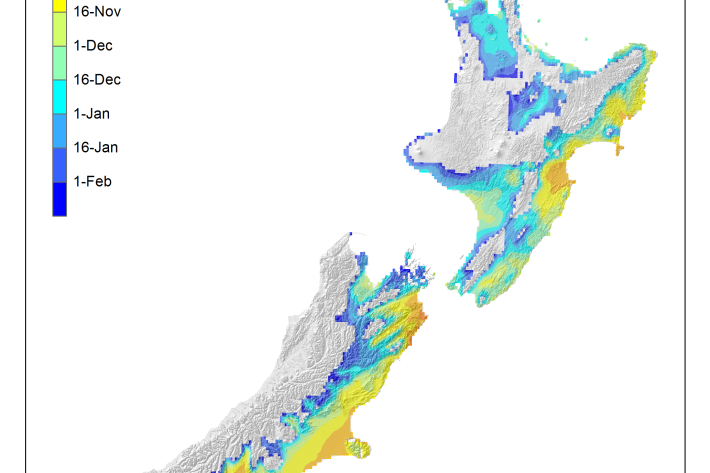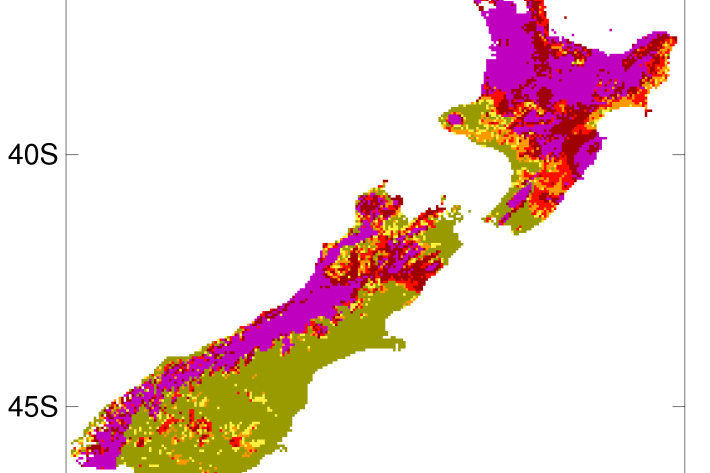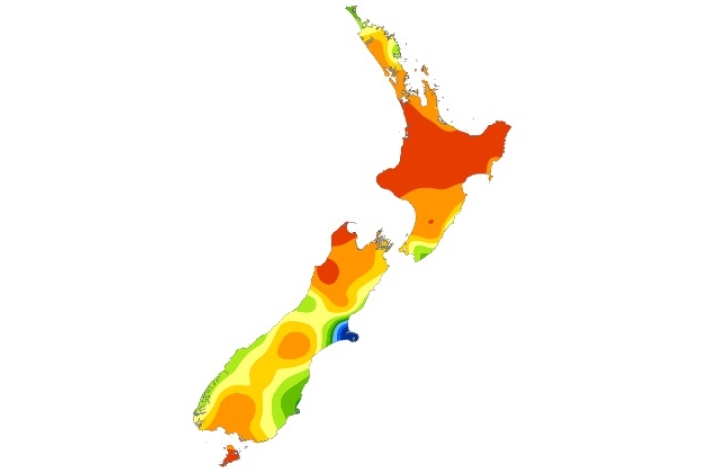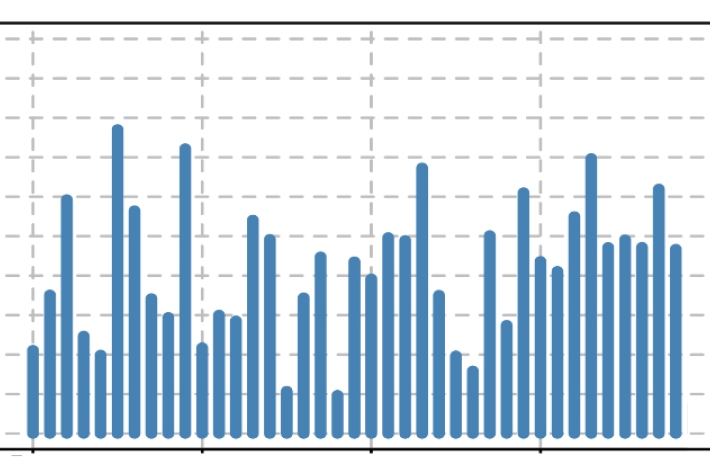Drought is a common feature of New Zealand's climate. On average, every year or two somewhere in New Zealand experiences a drought.
Prolonged droughts (three months or more) and/or wide-spread droughts (affecting three or more regions) can have a significant impact on New Zealand, with major losses of agricultural production and extended periods of water-use restrictions enforced.
If drought persists for several months in normally agriculurally-productive regions of the country, New Zealand's economy as a whole can be significantly impacted. This is related to a drop in production and the flow-on impact on processing and exports. The on-farm effects of drought often linger long after the drought is over due to the impact on forage quality, animal health, breeding stock numbers and farm cash-flow.
New Zealand will continue to experience droughts, and with climate change the frequency and length of droughts will slowly increase over this century and beyond. Good preparation, early warning and close monitoring of drought are three key factors for minimising the impact of drought. This webpage provides automated up-to-date national-scale maps of indicators of drought (based on observed climate data) so that drying trends can be detected early and drought conditions can be continuously monitored (the second and third key factors from above).
Click on the Drought Indicator Maps page below for up-to-date maps of soil moisture deficit (SMD), the standardised precipitation index (SPI) and rainfall deciles (RD). Also see the average SMD onset and termination maps to calculate your typical SMD season. The Drought Indicator Charts page has monthly-updated potential evapotranspiration deficit (PED) charts for every region of the country. Additional pages below provide a summary of the 2012-13 drought, useful links to other drought webpages and resources, and information on the various definitions of drought.
Related links
-

Average soil moisture deficit onset and termination maps
Maps of the average first and last dates of soil moisture deficit are shown here. -

2012-2013 Drought
The 2012-2013 drought affected the entire North Island plus the west coast of the South Island.



